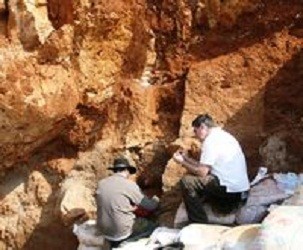Stone Age Fossils Give More Clues to Human Evolution
Stone Age fossils of people rediscovered in south-west China provide more clues to human evolution, according to a new study.
Researchers from the University of New South Wales and the Yunnan Institute of Cultural Relics and Archeology have rediscovered fossils of Stone Age people who lived 14,500 years ago at Longlin and Maludong.
Chinese geologists found a fourth partial skeleton in 1979 in a cave near the village of Longlin, but they kept it in an encased block of rock until 2009 when an international team removed and reconstructed the fossils.
In 1980, Chinese archaeologists also found fossils of three individuals at Maludong (or Red Deer Cave), near the city of Mengzi in Yunnan Province. These fossils also remained unstudied until 2008 when researchers from six Chinese and five Australian institutions reconstructed them.
Researchers had analysed the fossils and found that the skulls and teeth from Maludong and Longlin were very similar to each other, clearly showing that they belonged to the same era.
The researchers have named them as "Red-deer Cave people" because they hunted extinct red deer and cooked them in the cave at Maludong.
Researchers also found the red-deer cave had a mixture of archaic and modern features. Researchers believe that these people would have shared the landscape with modern-looking people at a time when China's earliest farming cultures were beginning.
"These new fossils might be of a previously unknown species, one that survived until the very end of the Ice Age around 11,000 years ago," said Darren Curnoe, professor from the University of New South Wales. "Alternatively, they might represent a very early and previously unknown migration of modern humans out of Africa, a population who may not have contributed genetically to living people," he added.
He said the discovery of the red-deer people opens up the next chapter in the human evolutionary story, which he called, the Asian chapter - and "it's a story that's just beginning to be told".




© Copyright IBTimes 2024. All rights reserved.





